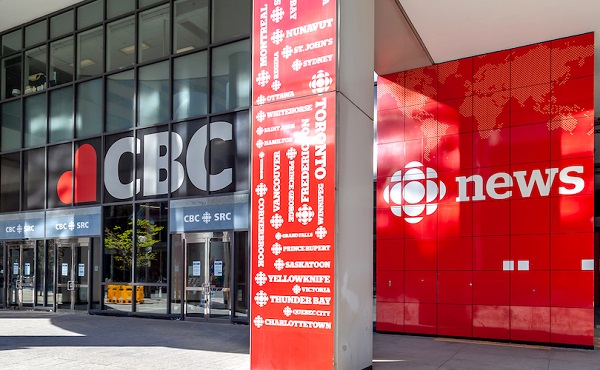Business
Federal government could save $10.7 billion this fiscal year by eliminating eight ineffective spending programs

From the Fraser Institute
By Jake Fuss and Grady Munro
The federal government could save up to $10.7 billion this fiscal year by ending eight ineffective spending programs, finds a new report published today by the Fraser Institute, an independent, non-partisan Canadian public policy think-tank.
“Canada’s federal finances have deteriorated markedly over the last decade, largely due to a rapid run up in spending, deficits and debt,” said Jake Fuss, director of fiscal studies at the Fraser Institute.
“As previous governments have done before, a comprehensive line-by-line review of Ottawa’s spending is required to identify those programs or initiatives that are not fulfilling their purpose, or are not providing good value for tax dollars.”
The study, Identifying Potential Savings from Specific Reductions to Federal Government Spending, highlights eight federal programs where government spending
does not appear to be accomplishing its stated goals, or where government funding is unnecessary:
– $1.5 billion — Regional Development Agencies
– $1.7 billion — Federal support for journalism
– $587.6 million — Federal support for electric vehicle production and purchases
– $340.0 million — Two Billion Trees program
– $3.5 billion — Canada Infrastructure Bank
– $2.4 billion — Strategic Innovation Fund
– $202.3 million — Global Innovation Clusters
– $530.0 million — Green Municipal Fund
Critically, eliminating these eight programs could reduce federal government spending by $10.7 billion in 2024-25: “Though just a starting point, a savings of $10.7 billion would meaningfully improve federal finances and help Ottawa put the country’s finances back on a stable footing,” Fuss said.
This study is part of a larger series of collected essays on federal policy reforms, Federal Blueprint for Prosperity, edited by Fraser Institute Senior Fellows Jock Finlayson and Lawrence Schembri.
The essay series, also released today, details federal policy reforms in health care, environmental and energy regulations, tax policy, immigration, housing, trade, etc. to increase prosperity for Canadians and improve living standards.
To learn more and to read the entire collected essay series, visit www.fraserinstitute.org.
Identifying Potential Savings from Specific Reductions in Federal Government Spending
- A marked deterioration in the state of Canada’s finances, driven largely by rapidly increasing spending, has created a need to review federal government spending to identify programs that are inefficient and/or ineffective. This study highlights eight spending areas that have easily identifiable problems, and should be a starting point for a more comprehensive review.
- The eight spending areas identified are: Regional Development Agencies, Government Supports for Journalism, Federal Support for Electric Vehicle Production and Purchases, the 2 Billion Trees Program, the Canada Infrastructure Bank, the Strategic Innovation Fund, the Global Innovation Clusters, and the Green Municipal Fund.
- These programs represent instances where government spending does not appear to be accomplishing the stated goals, and where government involvement is questionable.
- For instance, despite research suggesting business subsidies do little to promote widespread economic growth, the seven regional development agencies report vague objectives and results that make it difficult for government officials or Parliamentarians to assess the efficacy of the spending.
- Since the Canada Infrastructure Bank was first established in 2017, it has approved up to $13.2 billion in investments across 76 projects, but only two projects have been completed. These projects represent just $93.2 million (or 0.71 percent) of the total approved investments.
- The federal government could save $10.7 billion in 2024–25 alone if it eliminated spending in these eight areas. This amount would be impactful in improving the state of Canada’s finances, and more savings could be achieved through a comprehensive review of all spending.
Automotive
The high price of green virtue

By Jerome Gessaroli for Inside Policy
Reducing transportation emissions is a worthy goal, but policy must be guided by evidence, not ideology.
In the next few years, the average new vehicle in British Columbia could reach $80,000, not because of inflation, but largely because of provincial and federal climate policy. By forcing zero-emission-vehicle (ZEV) targets faster than the market can afford, both governments risk turning climate ambition into an affordability crisis.
EVs are part of the solution, but mandates that outpace market acceptance risk creating real-world challenges, ranging from cold-weather travel to sparse rural charging to the cost and inconvenience for drivers without home charging. As Victoria and Ottawa review their ZEV policies, the goal is to match ambition with evidence.
Introduced in 2019, BC’s mandate was meant to accelerate electrification and cut emissions from light-duty vehicles. In 2023, however, it became far more stringent, setting the most aggressive ZEV targets in North America. What began as a plan to boost ZEV adoption has now become policy orthodoxy. By 2030, automakers must ensure that 90 per cent of new light-duty vehicles sold in BC are zero-emission, regardless of what consumers want or can afford. The evidence suggests this approach is out of step with market realities.
The province isn’t alone in pursuing EV mandates, but its pace is unmatched. British Columbia, Quebec, and the federal government are the only ones in Canada with such rules. BC’s targets rise much faster than California’s, the jurisdiction that usually sets the bar on green-vehicle policy, though all have the same goal of making every new vehicle zero-emission by 2035.
According to Canadian Black Book, 2025 model EVs are about $17,800 more expensive than gas-powered vehicles. However, ever since Ottawa and BC removed EV purchase incentives, sales have fallen and have not yet recovered. Actual demand in BC sits near 16 per cent of new vehicle sales, well below the 26 per cent mandate for 2026. To close that gap, automakers may have to pay steep penalties or cut back on gas-vehicle sales to meet government goals.
The mandate also allows domestic automakers to meet their targets by purchasing credits from companies, such as Tesla, which hold surplus credits, transferring millions of dollars out of the country simply to comply with provincial rules. But even that workaround is not sustainable. As both federal and provincial mandates tighten, credit supplies will shrink and costs will rise, leaving automakers more likely to limit gas-vehicle sales.
It may be climate policy in intent, but in reality, it acts like a luxury tax on mobility. Higher new-vehicle prices are pushing consumers toward used cars, inflating second-hand prices, and keeping older, higher-emitting vehicles on the road longer. Lower-income and rural households are hit hardest, a perverse outcome for a policy meant to reduce emissions.
Infrastructure is another obstacle. Charging-station expansion and grid upgrades remain far behind what is needed to support mass electrification. Estimates suggest powering BC’s future EV fleet alone could require the electricity output of almost two additional Site C dams by 2040. In rural and northern regions, where distances are long and winters are harsh, drivers are understandably reluctant to switch. Beyond infrastructure, changing market and policy conditions now pose additional risks to Canada’s EV goals.
Major automakers have delayed or cancelled new EV models and battery-plant investments. The United States has scaled back or reversed federal and state EV targets and reoriented subsidies toward domestic manufacturing. These shifts are likely to slow EV model availability and investment across North America, pushing both British Columbia and Ottawa to reconsider how realistic their own targets are in more challenging market conditions.
Meanwhile, many Canadians are feeling the strain of record living costs. Recent polling by Abacus Data and Ipsos shows that most Canadians view rising living costs as the country’s most pressing challenge, with many saying the situation is worsening. In that climate, pressing ahead with aggressive mandates despite affordability concerns appears driven more by green ideology than by evidence. Consumers are not rejecting EVs. They are rejecting unrealistic timelines and unaffordable expectations.
Reducing transportation emissions is a worthy goal, but policy must be guided by evidence, not ideology. When targets become detached from real-world conditions, ideology replaces judgment. Pushing too hard risks backlash that can undo the very progress we are trying to achieve.
Neither British Columbia nor the federal government needs to abandon its clean-transportation objectives, but both need to adjust them. That means setting targets that match realistic adoption rates, as EVs become more affordable and capable, and allowing more flexible compliance based on emissions reductions rather than vehicle type. In simple terms, the goal should be cutting emissions, not forcing people to buy a specific type of car. These steps would align ambition with reality and ensure that environmental progress strengthens, rather than undermines, public trust.
With both Ottawa and Victoria reviewing their EV mandates, their next moves will show whether Canadian climate policy is driven by evidence or by ideology. Adjusting targets to reflect real-world affordability and adoption rates would signal pragmatism and strengthen public trust in the country’s clean-energy transition.
Jerome Gessaroli is a senior fellow at the Macdonald-Laurier Institute and leads the Sound Economic Policy Project at the BC Institute of British Columbia
Business
Carney shrugs off debt problem with more borrowing

Ottawa, we’ve got some problems.
The first problem is government debt is spiralling out of control because government spending is spiralling out of control. The second problem is no one within government is taking the first problem seriously.
Prime Minister Mark Carney’s first budget shows Ottawa will borrow about $80 billion this year.
Massive government borrowing means debt interest charges cost taxpayers more than $1 billion every week.
That’s enough money to build a brand-new hospital every week, but that money is going to the bond fund managers on Bay Street to pay interest on the government credit card.
Or think about it this way the next time you’re standing in the check-out line:
Every dollar you pay in federal sales tax goes to pay interest on the debt.
The government’s own non-partisan, independent budget watchdog pulled the fire alarm back in September.
“The current path we’re on in terms of federal debt as the share of the economy is unsustainable,” the Parliamentary Budget Officer said.
Here are other ways the PBO described the government’s financial situation:
Stupefying. Shocking. Something is going to break. Everybody should be concerned.
That’s how the PBO described the situation when he projected the deficit to be $10 billion lower than Carney’s deficit in Budget 2025.
How is Carney responding to Canada’s debt crunch? Instead of acting, Carney is obfuscating.
Instead of balancing the budget, Carney promises to balance the operating budget.
Carney isn’t balancing squat when he continues to borrow tens of billions of dollars every year. The closest Carney is willing to get to a balanced budget is a $57 billion deficit in 2029.
Instead of cutting the debt, Carney is changing the budget guardrails.
Even under the Trudeau government, politicians repeatedly promised to keep the debt as a share of the economy going down.
Carney used a sneaky sleight of hand in Budget 2025 to change that guardrail.
Because Carney’s debt will grow faster than Canada’s economy, he’s changing the previous guardrail of a declining debt-to-GDP ratio to a declining “deficit-to-GDP ratio.”
Carney plans to add $324 billion to the debt by 2030. For comparison, former prime minister Justin Trudeau planned to add $154 billion to the debt over those same years.
Instead of cutting spending, Carney muddies the waters with slogans of “spending less to invest more.”
The Carney government wrote Budget 2025 in a way to try to convince Canadians that it will save about $60 billion over five years.
But the government is spending billions of dollars more every year.
The government will spend $581 billion this year. That’s $38 billion more than the government spent last year. The government will spend $644 billion in 2029.
Does that look like saving money to you?
Even if you want to be as charitable as possible, nearly all the savings Carney promises to find occur in future years.
This should give taxpayers flashbacks of the Trudeau era.
Trudeau initially promised to run “modest” deficits and balance the budget in four years. But Trudeau never balanced the budget, he doubled the debt.
Trudeau promised to find $15 billion in savings. But Trudeau never cut spending, he ballooned the bureaucracy and spent billions more.
Here’s the key lesson: When the government promises to start its diet on Monday, Monday never comes.
The government debt problem is serious.
The government is now wasting more money paying interest on the debt than it sends to provinces in health-care transfers. In 2029, thirteen cents of every dollar the government takes will be used to make debt interest payments.
But instead of acting, Carney is trying to convince Canadians that everything is fine.
Instead of acting, Carney is using slogans and changing budget guardrails to paint a rosier picture of government finances.
Carney needs to change course. Shrugging off the debt won’t make things better. Only urgent action to cut spending will.
-

 Digital ID2 days ago
Digital ID2 days agoCanada moves forward with digital identification for federal benefits seekers
-

 espionage2 days ago
espionage2 days agoChinese-Owned Trailer Park Beside U.S. Stealth Bomber Base Linked to Alleged Vancouver Repression Case
-

 Alberta2 days ago
Alberta2 days agoSchool defunding petition in Alberta is a warning to parents
-

 Daily Caller2 days ago
Daily Caller2 days agoLaura Ingraham Presses Trump On Allowing Flood Of Chinese Students Into US
-

 Business2 days ago
Business2 days agoLiberals refuse to disclose the amount of taxpayer dollars headed to LGBT projects in foreign countries
-

 Crime1 day ago
Crime1 day agoCBSA Bust Uncovers Mexican Cartel Network in Montreal High-Rise, Moving Hundreds Across Canada-U.S. Border
-

 Daily Caller2 days ago
Daily Caller2 days agoUS Nuclear Bomber Fleet Shares Fence With Trailer Park Linked To Chinese Intel-Tied Fraudster
-

 Environment1 day ago
Environment1 day agoThe Myths We’re Told About Climate Change | Michael Shellenberger






